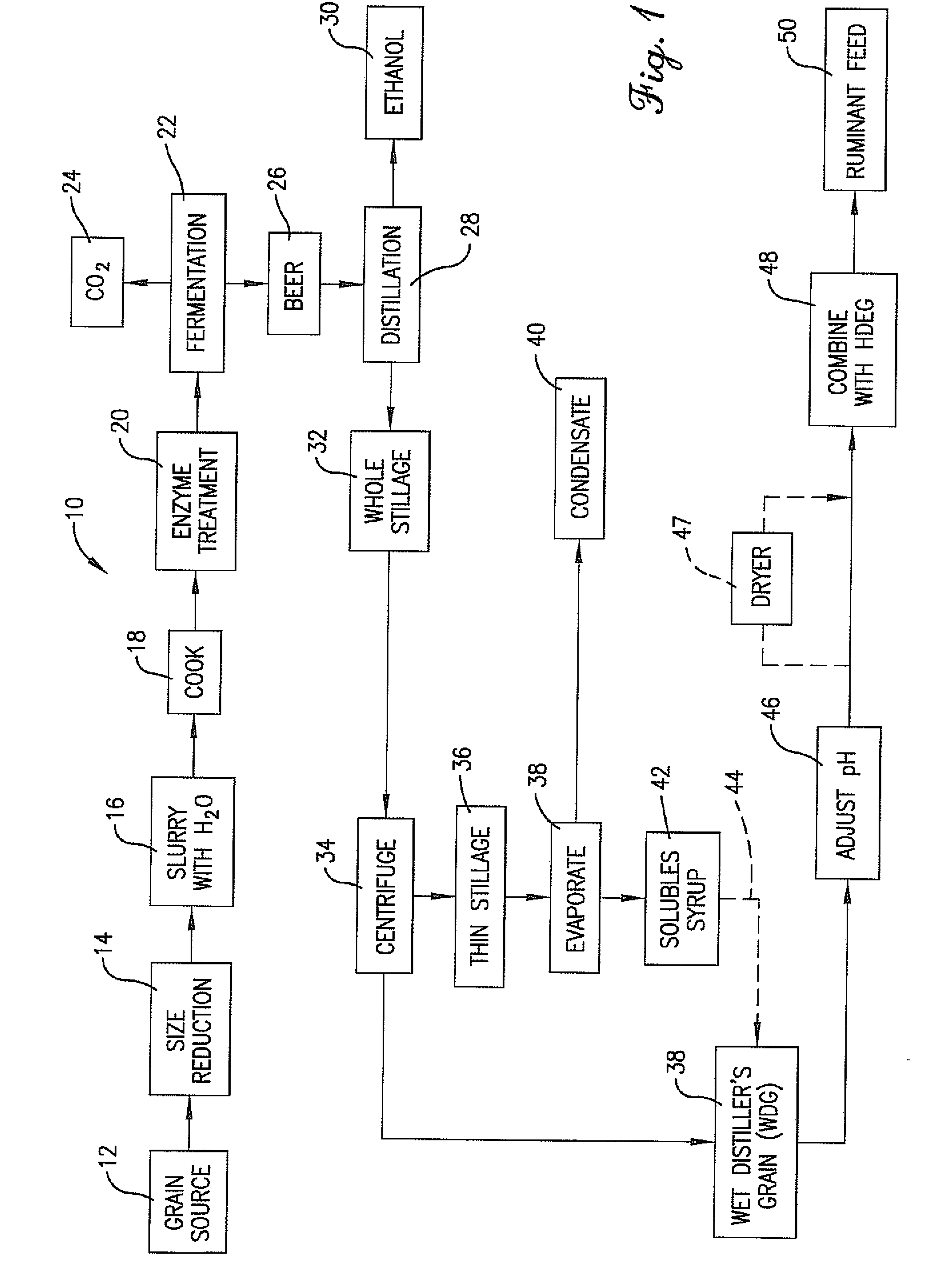RUMINANT FEEDS CONTAINING pH-ADJUSTED EDIBLE BYPRODUCTS AND HIGH DIGESTIVE EFFICIENCY GRAINS
- Summary
- Abstract
- Description
- Claims
- Application Information
AI Technical Summary
Benefits of technology
Problems solved by technology
Method used
Image
Examples
Embodiment Construction
[0018]The present invention is directed to improved ruminant feeds comprising a first pH-adjusted ingredient in the form of initially low pH ruminant-edible commercial byproducts, initially low pH grain or forage-derived products, and mixtures thereof, together with a second ingredient comprising high digestive efficiency feed grains. As used herein, “edible commercial byproducts” refers to low pH (generally below about pH 5) edible grain or dairy product-derived materials which are produced on a commercial basis as a byproduct adjunct or coproduct during the production of primary saleable products. For example, grain feedstock fuel ethanol plants are primarily directed to the production of fuel ethanol, but as a byproduct substantial quantities of distiller's grain products are produced. Other examples include whey permeate derived from cheese production, wet or dry corn gluten feed resulting from the wet milling of corn, and corn steep derived from wet corn milling. “Low pH grain ...
PUM
 Login to View More
Login to View More Abstract
Description
Claims
Application Information
 Login to View More
Login to View More - R&D
- Intellectual Property
- Life Sciences
- Materials
- Tech Scout
- Unparalleled Data Quality
- Higher Quality Content
- 60% Fewer Hallucinations
Browse by: Latest US Patents, China's latest patents, Technical Efficacy Thesaurus, Application Domain, Technology Topic, Popular Technical Reports.
© 2025 PatSnap. All rights reserved.Legal|Privacy policy|Modern Slavery Act Transparency Statement|Sitemap|About US| Contact US: help@patsnap.com

